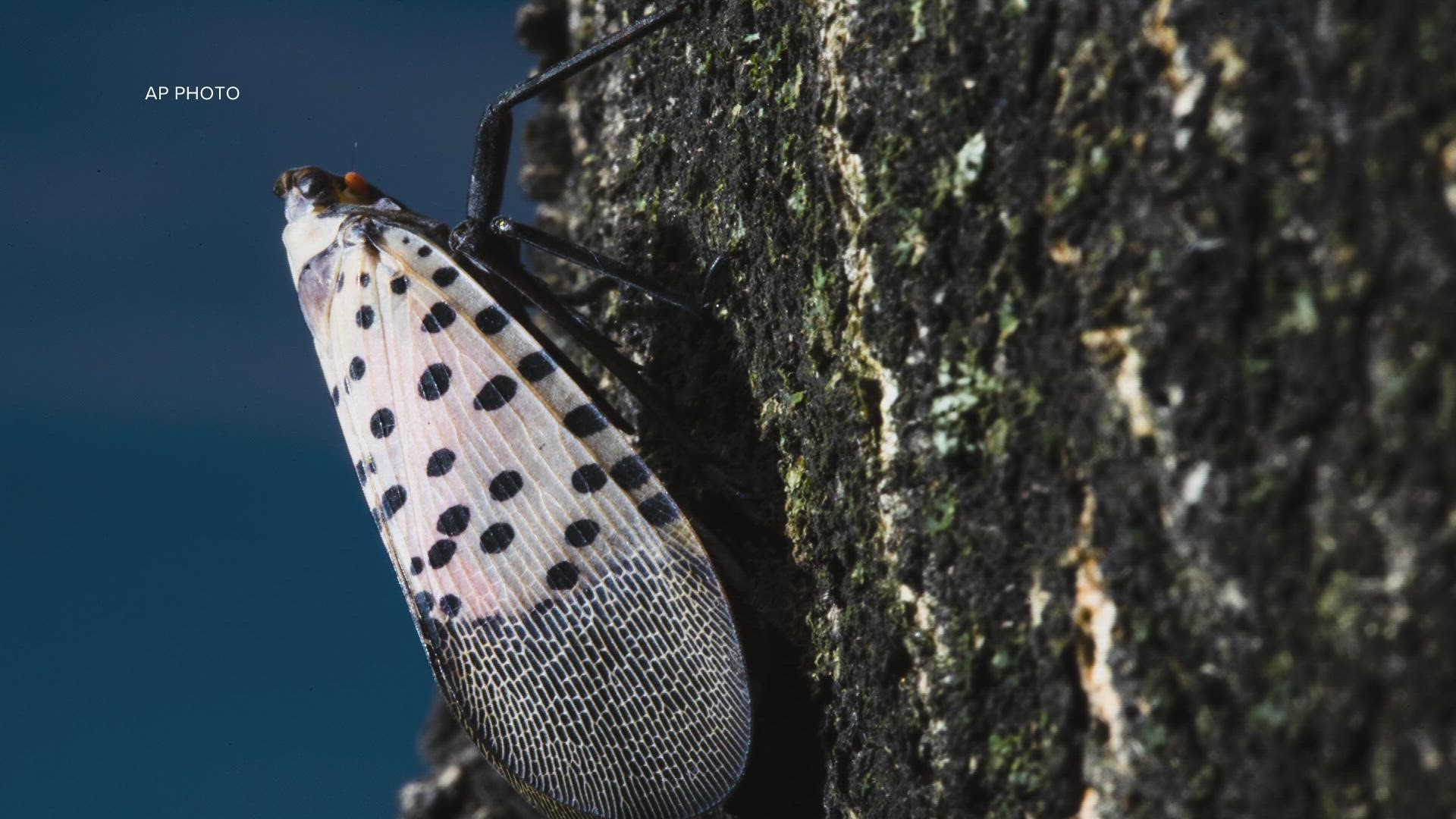MARYLAND, USA — Maryland agriculture officials are once again cracking down on an invasive insect in the D.C. region. The spotted lanternfly is an invasive insect that feeds on sap. Experts say if you see them, kill them.
On Monday, the Maryland Department of Agriculture expanded its lanternfly quarantine zone to include Allegany, Anne Arundel, Baltimore, Calvert, Caroline, Carroll, Cecil, Frederick, Harford, Howard, Kent, Montgomery, Prince George’s, Queen Anne’s, Talbot, Washington and Wicomico, as well as Baltimore City.
The quarantine is effective immediately and restricts the movements of regulated articles that might contain the spotted lanternfly in any of its life stages, including egg masses, nymphs, and adults.
“The spotted lanternfly continues to be a destructive invasive species that has negatively impacted agriculture operations throughout the mid-Atlantic region,” said MDA Secretary Kevin Atticks. “The department continues to take steps to expand the quarantine zone out of an abundance of caution as we remain vigilant in controlling the spread of this destructive insect.”
The original quarantine order from 2019 included Cecil and Harford counties, which have established spotted lanternfly populations. In early 2022 the quarantine zone was expanded to nine additional jurisdictions based on the confirmed existence of known spotted lanternfly populations in these areas, the Maryland Department of Agriculture said.
The spotted lanternfly poses a major threat to the region’s agricultural industries as it feeds on over 70 different types of crops and plants, including grapes, hops, apples, peaches, oak, pine, and many others. Originally from Asia, the spotted lanternfly was first detected in Berks County, Pennsylvania in fall 2014. As a known hitchhiker, the spotted lanternfly has also spread to Connecticut, Delaware, Indiana, New Jersey, New York, Ohio, Virginia and West Virginia.
Those living within the quarantine zone are encouraged to be vigilant in containing the spread of spotted lanternfly. Sightings may be reported through MDA’s online survey.
Additional information can be found here.

